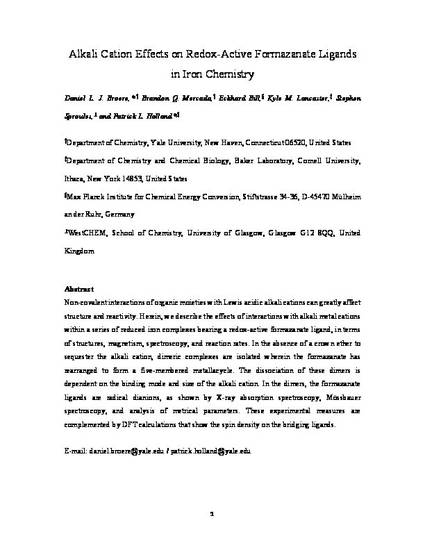
Unpublished Paper
Alkali Cation Effects on Redox-Active Formazanate Ligands in Iron Chemistry
(2018)
Abstract
Non-covalent interactions of organic moieties with Lewis acidic alkali cations can greatly affect
structure and reactivity. Herein, we describe the effects of interactions with alkali metal cations
within a series of reduced iron complexes bearing a redox-active formazanate ligand, in terms
of structures, magnetism, spectroscopy, and reaction rates. In the absence of a crown ether to
sequester the alkali cation, dimeric complexes are isolated wherein the formazanate has
rearranged to form a five-membered metallacycle. The dissociation of these dimers is
dependent on the binding mode and size of the alkali cation. In the dimers, the formazanate
ligands are radical dianions, as shown by X-ray absorption spectroscopy, Mössbauer
spectroscopy, and analysis of metrical parameters. These experimental measures are
complemented by DFT calculations that show the spin density on the bridging ligands.
Disciplines
Publication Date
2018
Comments
Supplemental information found here:
https://works.bepress.com/daniel-broere/30/
Citation Information
Daniel L J Broere, Brandon Q. Mercado, Eckhard Bill, Kyle M. Lancaster, et al.. "Alkali Cation Effects on Redox-Active Formazanate Ligands in Iron Chemistry" (2018) Available at: http://works.bepress.com/daniel-broere/29/